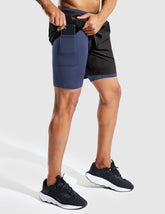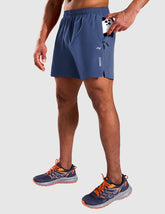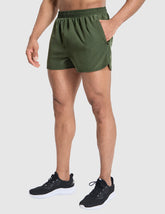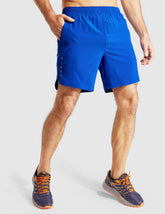What to Wear Hiking
21 Jan 2020

There is a saying that when in Rome, do as the Romans do which means we should do the right things in different situations. This article offers some hiking attire for choosing when hiking.
What to Wear Hiking (the Quick-and-Dirty List):
- No denim jeans or cotton tees: The features of cotton absorbing the water may keep you feeling sweaty in hot temps and chills you when the weather changes.
- Polyester, nylon or merino wool undies (and everything else): These materials are ideals for next-to-skin layers such as briefs, tees, sports bras or long underwear, and for socks, thanks to its moisture management ability, moving sweat off skin and drying fast.
- Comfortable yet sturdy pants: Moving freely and breathable is your hiking pants'first choice. Meanwhile, the features of sturdy will protect your leg from shred by branches and boulders, making the journey more safe.
- A warm jacket: A jacket lined with fleece inside or water-resist down will block out the cold and keep you warm, which is smart for the cold weather.
- A rain jacket: Such a huge impact on our hiking as bad weather, the rain jacket is a “Waterproof/breathable” is the key phrase, meaning it will block rain and wind, but will also let you sweat without feeling like you’re wearing a plastic bag.
- A brimmed hat: Exposure to the sun directly hurts the skin, may also make your head sweaty, the brim helps keep rain and sun out of your eyes. Sunglasses will help, too.
- Sturdy shoes: Without the exaggeration that an appropriate mid-layer determinant your feeling of this journey. However, a pair of footwear that can provide support, protection from rocks and roots, and traction on wet and dry surfaces is the key to
Key Fabric Properties
Different properties in different layers must be needed regardless of what hiking clothing is made of or looks like.
- Wicking: Important in a base layer. On a cool hike, a little bit of warmth in the form of long underwear might be in order, the fabric’s wicking ability to pull moisture (sweat) away from you and moving it to the fabric’s outer surface is always important in your next-to-skin layer. There is no certain answer on layers choice, so do whatever is most comfortable. The underwear, Bra, Tank top/camisole, base-layer top and bottoms as a baser layer all will be good.
- Insulating: Important in your mid-layer, this ability is key to your staying warm. So a lightweight fleece top or jacket, and a lightweight puffy jacket that compresses well to fit in your daypack for your choice. If conditions will be mild, a fleece jacket is sufficient. If things could get cold, then also pack a puffy. Standard down, the insulation inside many puffy jackets, loses much of its warmth-retaining ability if you get it wet, so synthetic insulations are a better bet. You can also bring a jacket filled with water-resistant down or a hybrid that combines a synthetic fill with water-resistant down.
- Waterproof &windproof: Important in an outer layer or “shell” this keeps the elements from saturating your clothes with rain or chilling you when wind whisks away the heat your body produces. Even a cloudless blue sky in the morning can suddenly give way to a fast-moving rain squall. Keeping dry is key to avoiding hypothermia, so pack a rain jacket and pants that offer waterproof/breathable protection.
- Breathable: Important in all your layers, this helps your wicking layer dry out more quickly.
- Waterproof/breathable: Advanced shells offer this coverage combo, though even the most sophisticated technologies prioritize blocking wind and rain.
- Sun protection: Clothing that has an ultraviolet protection factor (UPF) rating will help protect skin against the sun’s damaging UV rays.
Basic Fabric Choices
Here’s a primer on some popular fabric options for outdoor apparel:
- Wool: Today’s merino wool clothing has fine fibers that make it soft, breathable, moisture-wicking, reasonably quick to dry and not prone to retaining odors. Wool absorbs moisture but stays warmer than many other fabrics. Wool is also inherently flame retardant.
- Polyester/nylon clothing: This is essentially fabric made from plastic, and it's good stuff. The material has good insulation and wind-stopping value and can be made into many different thicknesses. Nylon is pretty tough and can be used on your outer layer. It doesn't absorb much moisture, and what does evaporates quickly. It is best used as some sort of windbreaker, to keep your clothing from being compromised by the wind.
- Fleece: Fleece jackets are actually made out of polyester, though their warmth is as much a function of their soft, thick fibers as it is the material’s chemical properties.
- Polyester/nylon jackets: In their “hard shell” form (think rain jacket or the outer layer of a puffy jacket), these synthetics, often in combination with special coatings or laminates, protect you from rain and wind.
- Silk: Because of its modest wicking ability, silk isn’t ideal for a strenuous hike. Treated silk performs better because it’s been chemically modified to enhance wicking. Silk’s soft, luxurious feel is nice, but it’s not particularly rugged nor odor resistant. Silk is a natural fabric, and not bulky…a thin under the layer of insulating comfort and likely worn for ages in Europe.
- Cotton: Notoriously inefficient at wicking and drying, cotton excels at soaking up sweat, staying wet and chilling you. In sweltering heat, you could choose to wear it if you don’t mind feeling clammy and sticky. But once wet, cotton feels cold and can lose up to 90 percent of its insulating properties. Wet cotton can wick heat from your body 25 times faster than when it's dry.
Environmental Considerations:
Some special clothing recommendations researches for the area you’re visiting will have to do if it is to avoid unique challenges in hiking. For example:
- Bug-protective clothing: Long sleeves, long pants, clothes with built-in insect repellent and/or bug-net clothing will be needed to protect you from ticks, mosquitoes, no-see-ums, black flies or other pests when you are hiking through brushy woodlands, or a deep, dark forest.
- Tall leather hiking boots: Tall leather hiking boots designed to mountaineer not only make it more comfortable to climbing but also offer added protection from snakes on any occasion.
- Waterproof gaiters: It takes a great time to purchase the necessities before we are about to hiking. Please keep in mind that waterproof gaiters will be a plus here if your trail will be crossing a lot of snowfields. That will be very helpful especially snow gets soft in the afternoon sun.
Tags:



